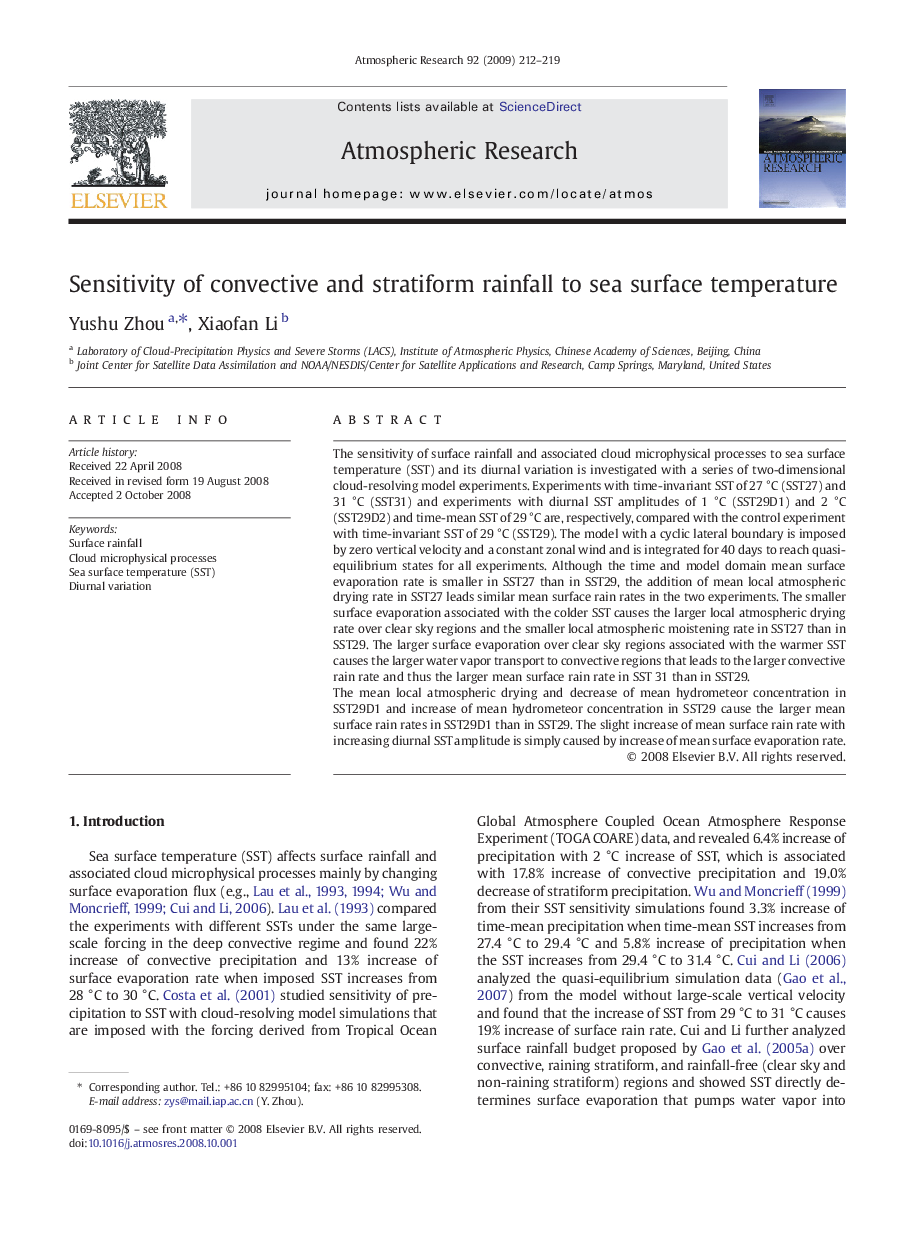| Article ID | Journal | Published Year | Pages | File Type |
|---|---|---|---|---|
| 4450842 | Atmospheric Research | 2009 | 8 Pages |
The sensitivity of surface rainfall and associated cloud microphysical processes to sea surface temperature (SST) and its diurnal variation is investigated with a series of two-dimensional cloud-resolving model experiments. Experiments with time-invariant SST of 27 °C (SST27) and 31 °C (SST31) and experiments with diurnal SST amplitudes of 1 °C (SST29D1) and 2 °C (SST29D2) and time-mean SST of 29 °C are, respectively, compared with the control experiment with time-invariant SST of 29 °C (SST29). The model with a cyclic lateral boundary is imposed by zero vertical velocity and a constant zonal wind and is integrated for 40 days to reach quasi-equilibrium states for all experiments. Although the time and model domain mean surface evaporation rate is smaller in SST27 than in SST29, the addition of mean local atmospheric drying rate in SST27 leads similar mean surface rain rates in the two experiments. The smaller surface evaporation associated with the colder SST causes the larger local atmospheric drying rate over clear sky regions and the smaller local atmospheric moistening rate in SST27 than in SST29. The larger surface evaporation over clear sky regions associated with the warmer SST causes the larger water vapor transport to convective regions that leads to the larger convective rain rate and thus the larger mean surface rain rate in SST 31 than in SST29.The mean local atmospheric drying and decrease of mean hydrometeor concentration in SST29D1 and increase of mean hydrometeor concentration in SST29 cause the larger mean surface rain rates in SST29D1 than in SST29. The slight increase of mean surface rain rate with increasing diurnal SST amplitude is simply caused by increase of mean surface evaporation rate.
